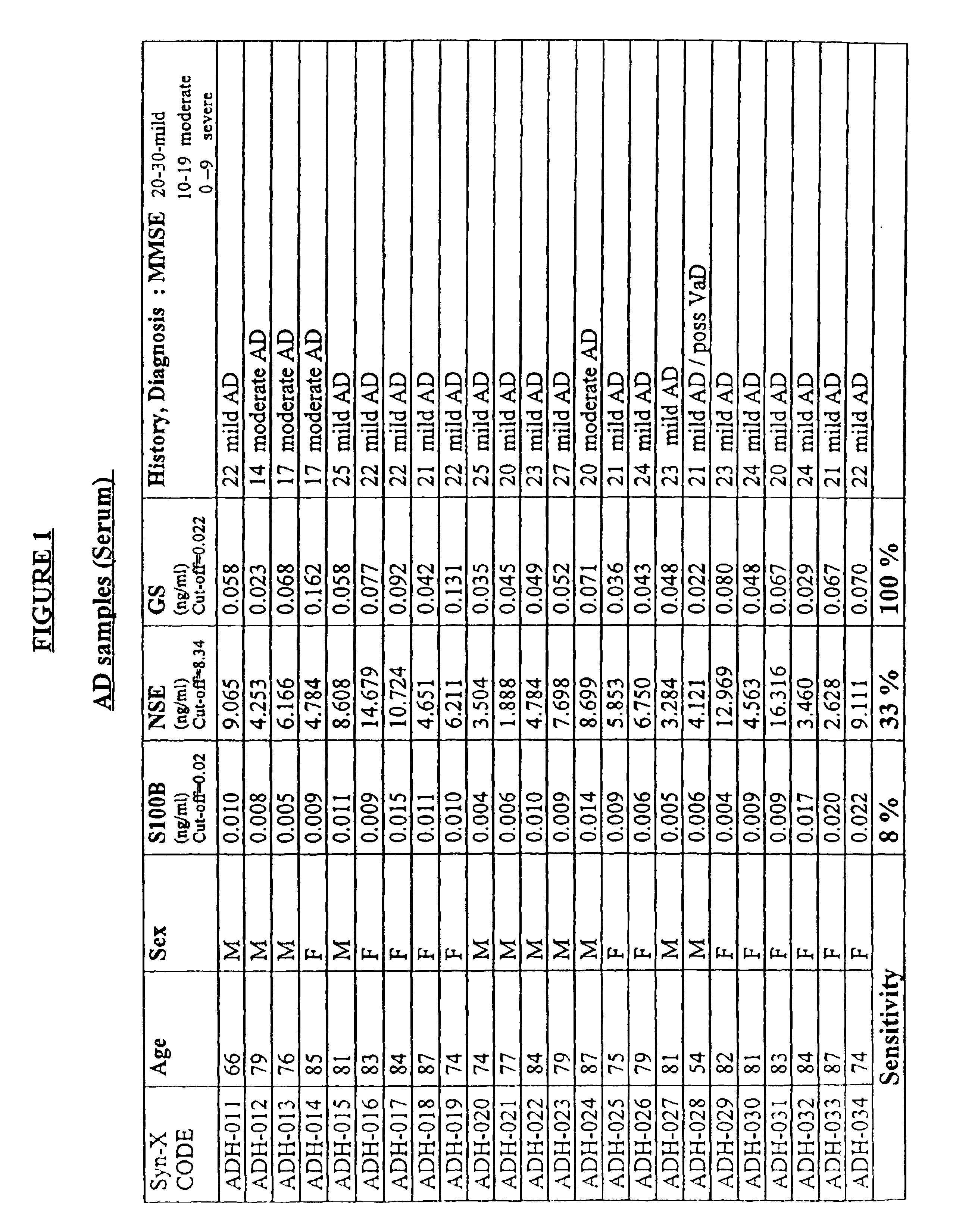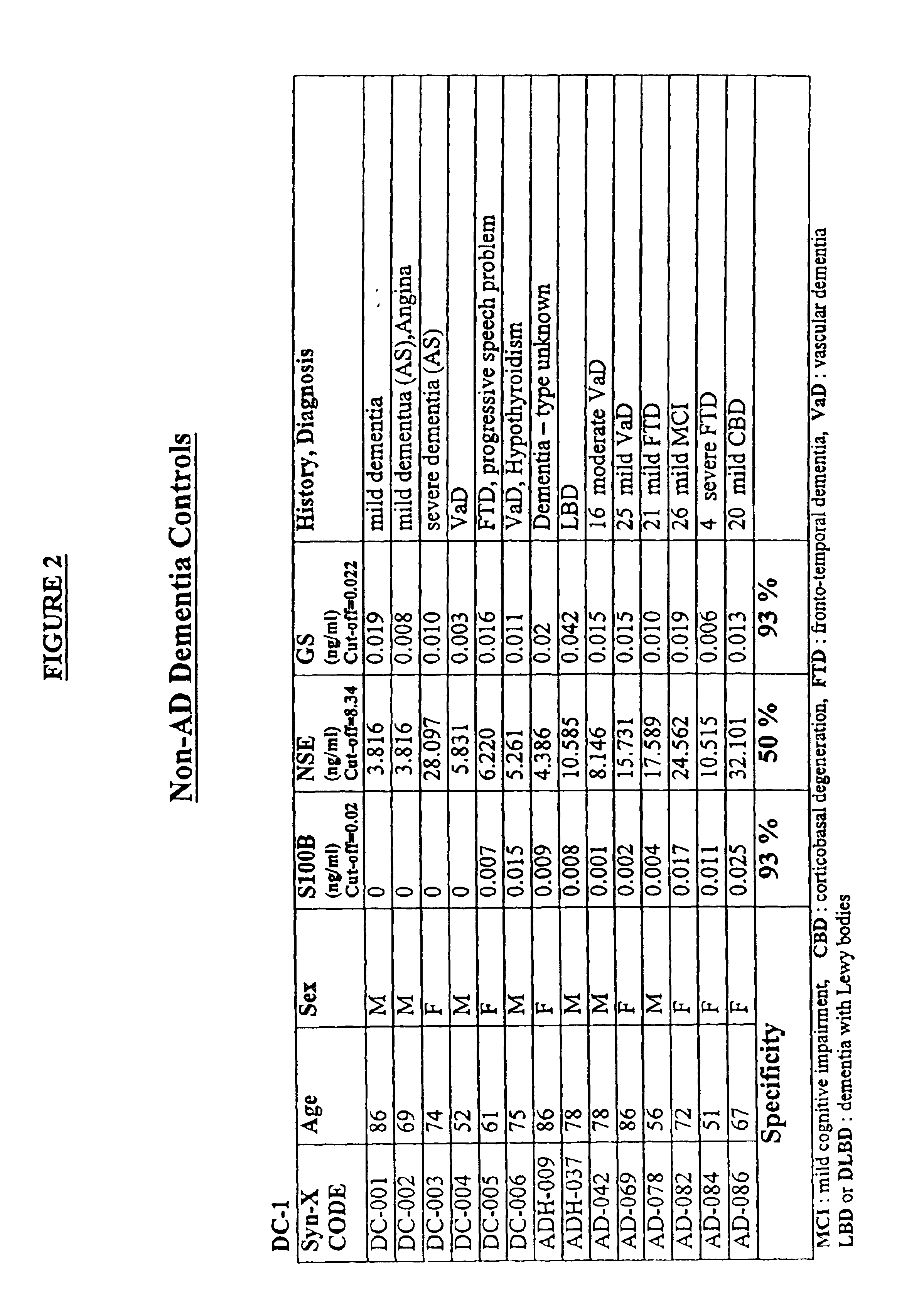Process for determining the presence of monomeric brain associated human glutamine synthetase in patients exhibiting mild cognitive impairment
a monomeric brain and human glutamine technology, applied in the field of alzheimer dementia diagnosis, can solve the problems of requiring a long period of time, unable to reduce either to practice, and requiring a large amount of time to achiev
- Summary
- Abstract
- Description
- Claims
- Application Information
AI Technical Summary
Benefits of technology
Problems solved by technology
Method used
Image
Examples
Embodiment Construction
[0041]The markers which are analyzed according to the method of the invention are released into the circulation and may be present in the blood or in any blood product, for example plasma, serum, cytolyzed blood, e.g. by treatment with hypotonic buffer or detergents and dilutions and preparations thereof, and other body fluids, e.g. CSF, saliva, urine, lymph, and the like. In another preferred embodiment the concentration of the markers in CSF may be measured.
[0042]The terms “above normal” and “above cut-off” are used to refer to a level of a marker that is greater than the level of the marker observed in normal individuals who are not undergoing a cerebral event, i.e. brain degeneration or atrophy. For some markers, very low levels of the marker may be present normally in an individual's blood. For other markers analyzed according to the invention, detectable levels may be present normally in blood. Therefore, these terms indicate a level that is significantly above the normal leve...
PUM
| Property | Measurement | Unit |
|---|---|---|
| Weight | aaaaa | aaaaa |
| Time | aaaaa | aaaaa |
| Atomic weight | aaaaa | aaaaa |
Abstract
Description
Claims
Application Information
 Login to View More
Login to View More - R&D
- Intellectual Property
- Life Sciences
- Materials
- Tech Scout
- Unparalleled Data Quality
- Higher Quality Content
- 60% Fewer Hallucinations
Browse by: Latest US Patents, China's latest patents, Technical Efficacy Thesaurus, Application Domain, Technology Topic, Popular Technical Reports.
© 2025 PatSnap. All rights reserved.Legal|Privacy policy|Modern Slavery Act Transparency Statement|Sitemap|About US| Contact US: help@patsnap.com



